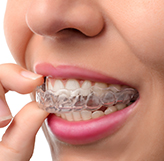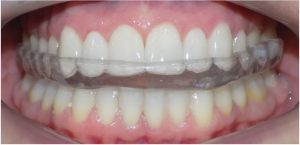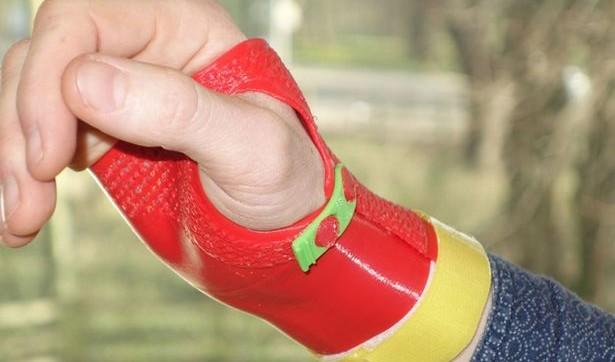Occlusal stabilization splints are prescribed for people who tend to clench or grind their teeth. They’re typically worn at night, and while some people tolerate them well, others find them highly uncomfortable, sometimes to the point of noncompliance. But as 3D printing has become more accessible to the dental industry, some dental professionals have wondered if 3D printed occlusal stabilization splints might be made to be more comfortable than conventionally manufactured ones.
3D printing has shown promise with splints of other kinds. 3D printed splints have shown themselves to be more flexible, breathable and comfortable, and they can be made to be extremely lightweight while still offering the same kind of support and protection that conventional splints do. In addition, they can be customized to fit better than traditional splints can. Casts, too, have been greatly revamped using 3D printing, such as the waterproof customized casts from ActivArmor.
In a study entitled “Clinical comparison of conventional and additive manufactured stabilization splints,” a group of researchers focused on occlusal stabilization splints to compare patient comfort and satisfaction between conventionally manufactured and 3D printed devices. 14 test subjects underwent treatment with occlusal stabilizations splints over a period of 12 weeks. Seven of them received conventionally manufactured splints (CM-SS), and seven received additively manufactured ones (AM-SS). 12 of the subjects completed the 12-week follow-up period.
While the splint manufacturing method had no significant influence on the outcome of the treatment, a significantly larger number of subjects reported feeling greater comfort with the 3D printed splints than with the conventionally manufactured ones. On a scale of 0 to 100, with 0 representing excellent comfort and 100 representing great discomfort, the mean result was 15 for the 3D printed splints and 42 for the conventionally manufactured splints.
“There was no significant difference in mean delta change for unassisted jaw opening from baseline to 12 weeks between the two groups, for CM-SS it was 2 mm difference and for AM-SS the difference was 3 mm,” the researchers state. “All subjects in both treatment groups showed improved oral function.”
All of the subjects underwent both traditional alginate impressions as well as intraoral digital scanning in order to create the models for their splints. Unsurprisingly, the subjects greatly preferred the scanning to the impressions, although the scanning took longer.
 The study shows that there is great promise for the 3D printing of occlusal stabilization splints. Overall, the dental and orthodontic industry is taking a lot of notice of 3D printing technology. 3D printed molds for orthodontic aligners are a very big topic of conversation in the industry right now, as the technology allows for reduced costs, faster turnaround, and efficient mass customization. As 3D printing materials progress and more biocompatible materials are developed, we may also see aligners and other orthodontic devices being directly 3D printed, reducing costs and speeding production even further.
The study shows that there is great promise for the 3D printing of occlusal stabilization splints. Overall, the dental and orthodontic industry is taking a lot of notice of 3D printing technology. 3D printed molds for orthodontic aligners are a very big topic of conversation in the industry right now, as the technology allows for reduced costs, faster turnaround, and efficient mass customization. As 3D printing materials progress and more biocompatible materials are developed, we may also see aligners and other orthodontic devices being directly 3D printed, reducing costs and speeding production even further.
It’s not only dental labs that are turning to 3D printing, either. Dentists and orthodontists are beginning to install 3D printers directly in their offices, so that they can create custom tools and devices right as they need them. This study shows that not only is 3D printing more convenient for manufacturers and dental professionals, but that it is preferred by patients, at least in the case of splints.
Authors of the paper include Christian Berntsen, Martin Kleven, Marianne Heian and Carl Hjortsjö.
Discuss this and other 3D printing topics at 3DPrintBoard.com or share your thoughts below.
Subscribe to Our Email Newsletter
Stay up-to-date on all the latest news from the 3D printing industry and receive information and offers from third party vendors.
You May Also Like
Gorilla Sports GE’s First 3D Printed Titanium Cast
How do you help a gorilla with a broken arm? Sounds like the start of a bad joke a zookeeper might tell, but it’s an actual dilemma recently faced by...
Nylon 3D Printed Parts Made More Functional with Coatings & Colors
Parts 3D printed from polyamide (PA, Nylon) 12 using powder bed fusion (PBF) are a mainstay in the additive manufacturing (AM) industry. While post-finishing processes have improved the porosity of...
$25M to Back Sintavia’s Largest Expansion of Metal 3D Printing Capacity Since 2019
Sintavia, the digital manufacturing company specializing in mission-critical parts for strategic sectors, announced a $25 million investment to increase its production capacity, the largest expansion to its operations since 2019....
Velo3D Initiates Public Offering in a Bid to Strengthen Financial Foundations and Drive Future Growth
Velo3D (NYSE: VLD) has been among a number of publicly traded 3D printing firms that have attempted to weather the current macroeconomic climate. After posting a challenging financial report for 2023,...

































